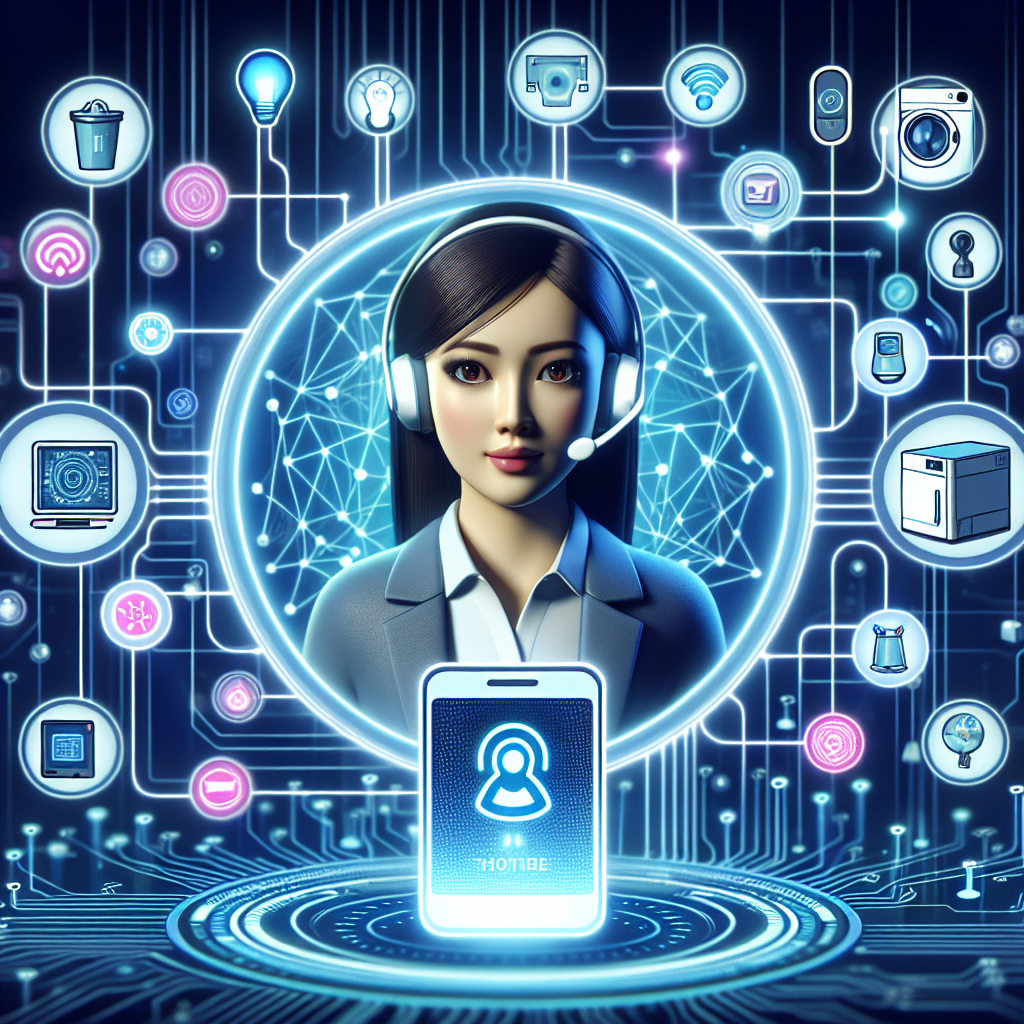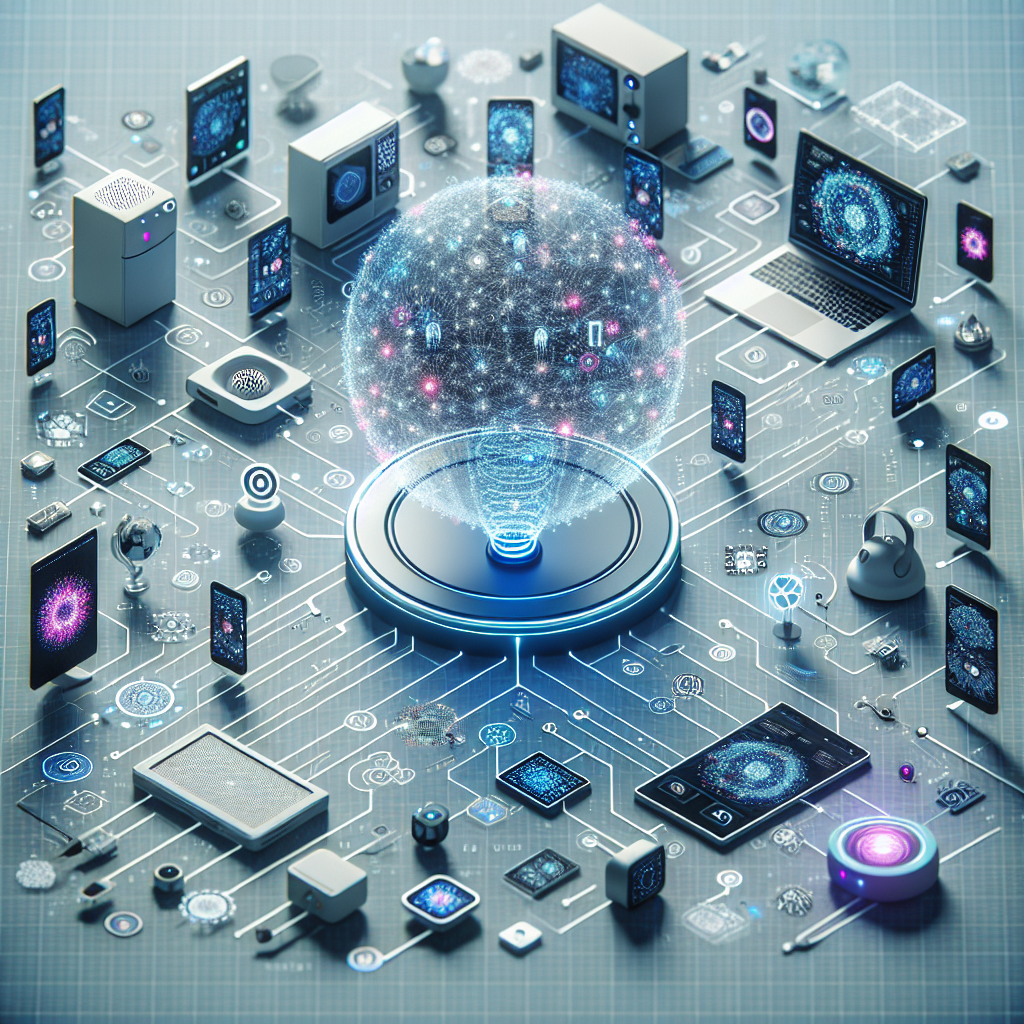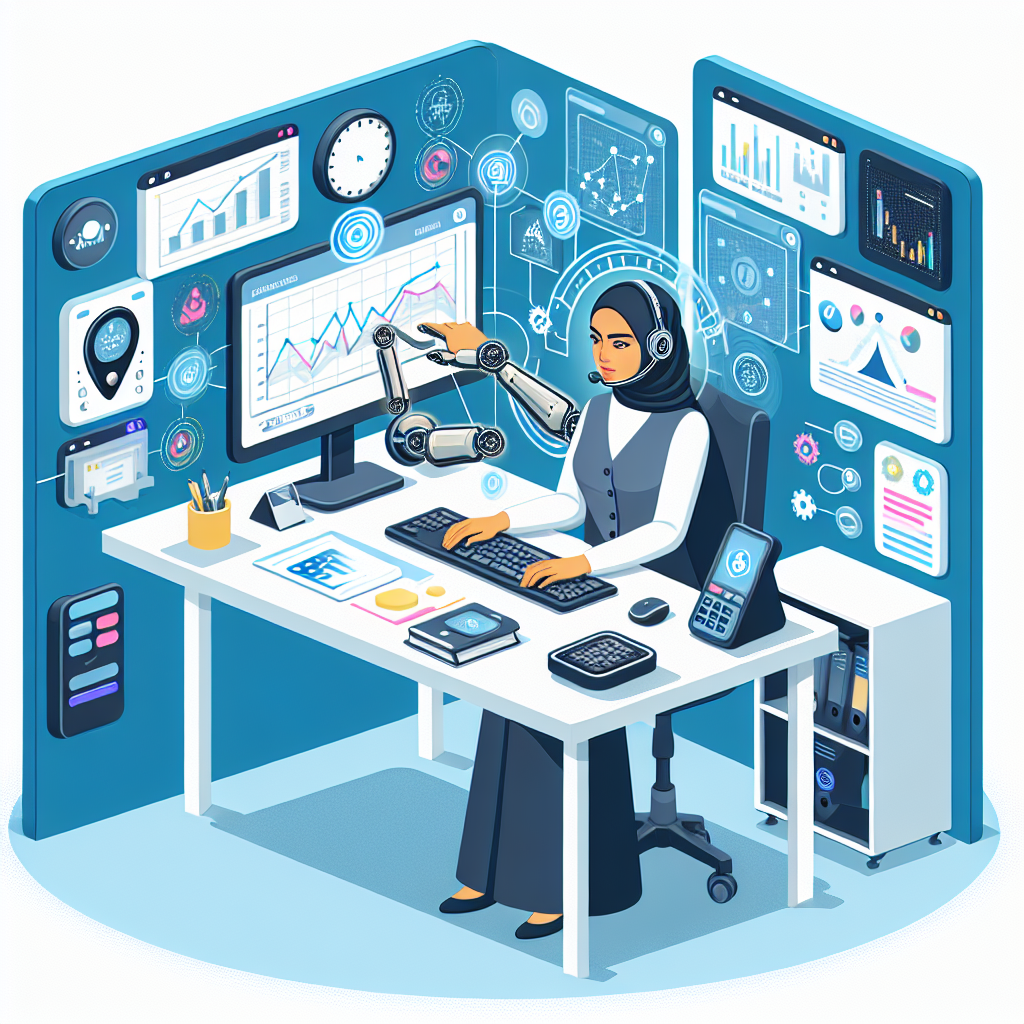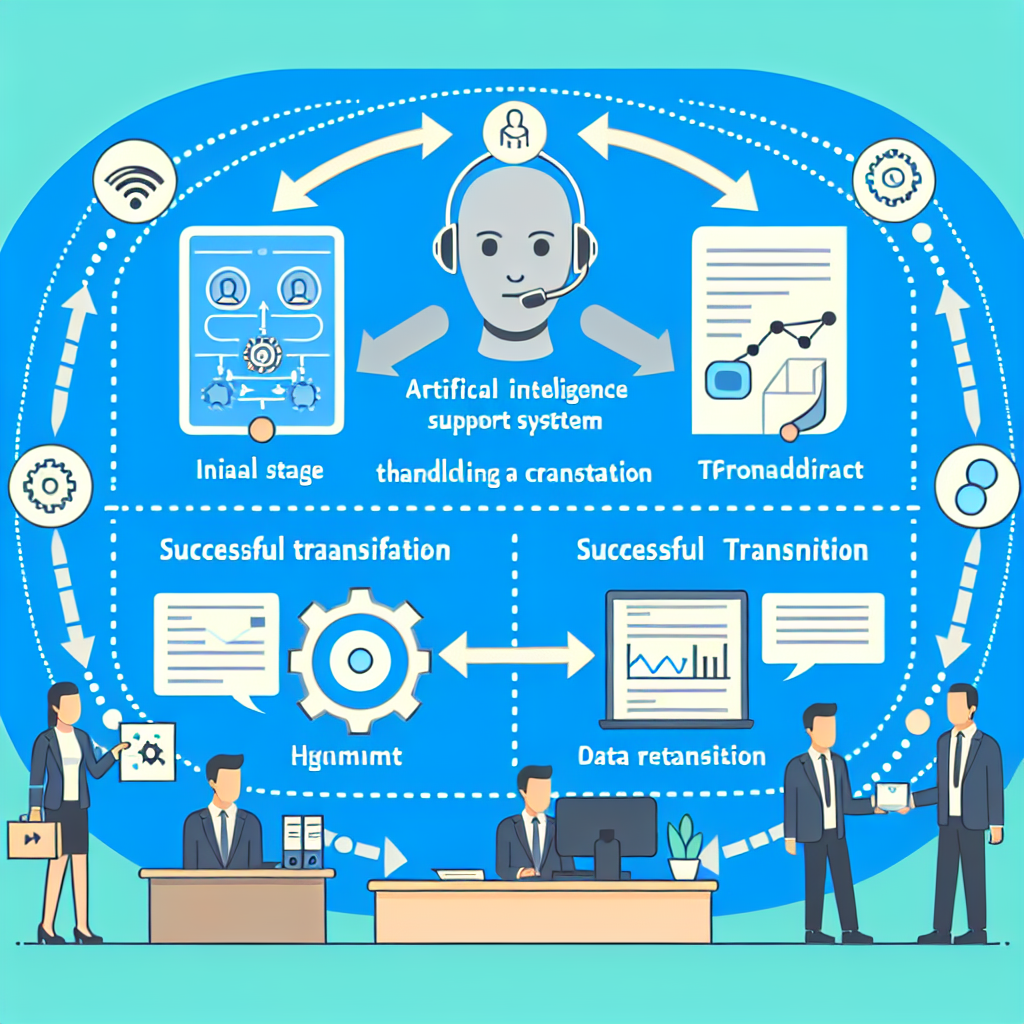
Today's hyper-connected world is significantly powered by the Internet of Things (IoT), a complex constellation of smart devices that share data to drastically improve efficiency and life quality. However, their management and troubleshooting can be intricate due to their diversity and sophistication, which is where Artificial Intelligence (AI) comes into play. AI in phone support for IoT devices is making a tremendous impact; it's not far fetched to say it's now a game-changer.

AI uses machine learning and deep learning algorithms to understand customer issues raised during phone support better, adding a layer of intelligence to automated practices. For instance, AI systems are capable of automatically answering customer queries, delegating complex problems to human agents, and even learning from the problem-solving process, gradually enhancing their proficiency and response time.
These smart systems can handle multiple queries simultaneously - a feat beyond human capability. AI also learns from each engagement, consistently evolving problem-solving methods. Though human interaction remains essential for highly complex troubleshooting, AI in phone support is proficient in handling everyday issues, cutting costs and improving customer satisfaction dramatically.
Moreover, incorporating AI isn't just about efficiency, but also about predictability. It has the potential to identify patterns and trends that might lead to potential device malfunctions, thus allowing preventive measures to be put in place. This predictive and proactive maintenance helps increase the lifespan of IoT devices and ensures their optimum functioning.
Overall, AI integration in phone support for IoT devices is revolutionizing customer service, doing away with long wait times, and enabling quick, effective troubleshooting. The future of IoT management is undoubtedly AI-driven, leveraging deep-learning capabilities to provide rapid, efficient support to connected devices.
In the rapidly evolving landscape of Internet of Things (IoT), intelligent troubleshooting has become an undeniable necessity. In this context, Artificial Intelligence (AI) plays an instrumental role in managing and easing the procedures involved in the troubleshooting of IoT devices. AI brings a host of benefits to the table, three of which prominently stand out - alacrity in rendering service, considerable trimming of operational costs, and enhanced diagnostic precision.
The very first benefit that AI offers is prompt service. Conventional troubleshooting often entails long waiting times, causing dissatisfaction among users. However, AI-enabled phone support carries the ability to offer 24/7 real-time assistance, thereby reducing time delays and improving customer experience.
Secondly, AI significantly reduces operational costs. By incorporating AI in phone support, the necessity for human intervention is minimized. This not only allows companies to allocate human resources more efficiently but also leads to substantial savings in the long run. According to a Deloitte study, almost 25% of service center calls could be handled by AI, thereby allowing scope for redistribution of human capabilities.
Lastly, AI brings in enhanced diagnostic accuracy. AI components like Machine Learning and Deep Learning facilitate analysis of a broad range of data, leading to accurate diagnoses of potential issues. Tools like AWS Machine Learning provide predictive analytics that are instrumental in avoiding or rectifying errors at the earliest. This not only prevents critical failures but also bolsters the performance of IoT devices.
Thus, integrating AI into phone-support systems for IoT can prove to be a game-changer, aiding in effective management of complex troubleshooting scenarios. It not only enhances user experience through swift service but also promotes operational efficiency and increases the precision of diagnostics, making it a truly valuable asset for businesses.
In the expanding landscape of the Internet of Things (IoT), providing robust phone support has become an increasingly complex task. However, the inclusion of Artificial Intelligence (AI) in the support infrastructure is transforming the way businesses troubleshoot and serve their customers. Here, we will delve into a few real-world examples of businesses that have successfully integrated AI into their IoT support services.

One of the more successful case studies comes from Contact Solutions, a company specializing in customer service solutions. They incorporated AI into their phone support to track and analyze customer behavior, issue complexities, and agent performance. The adoption of AI enabled more efficient problem-solving, eventually improving customer satisfaction and reducing operational costs.
Another strong example is ServiceNow. This multinational digital workflow company implemented AI algorithms to automate their customer service operations. The intelligent virtual agent, enriched with machine learning and natural language processing, has been successful in accurately diagnosing issues, suggesting solutions, and if necessary, seamlessly transferring the call to a human agent. This mix of AI and human interaction has significantly improved their customer service experience and efficiency.
Lastly, the global tech giant, Cisco has integrated AI-driven contextual analytics into its IoT tech support. Their AI system processes numerous signals from various IoT devices, identifies anomalies, and offers preventative and corrective measures. This predictive and proactive approach has minimized downtime and greatly improved customer satisfaction.
The success of these companies in integrating AI into their phone support systems for IoT devices offers a valuable lesson. It highlights the importance of leveraging AI to improve customer experiences, streamline operations, and ultimately, stay competitive in an IoT-driven market.
Implementing AI Support Systems is no small task, but when done effectively it can greatly streamline the functionality of phone support for IoT devices. IoT devices commonly require complex troubleshooting, and adding AI assistance can make the process more efficient and user-friendly.
Firstly, recognize that hardware requirements may need updating to accommodate the new technology. For IoT devices, this could involve integrating sensors that communicate with AI software or creating additional space on storage systems for increased data processing requirements.
Software-wise, there are many routes to integrating AI into your phone support system. AI customer service platforms like those offered by Salesforce are an increasingly popular choice. These provide AI-enhanced phone support capabilities, and can easily integrate with existing CRM systems.
An important consideration in the application of AI in your system is the training of AI models. These models have to know how to handle customer queries efficiently and accurately. Whether this training is done in-house or outsourced, rigorous sessions will ensure that the AI system recognizes patterns and makes intelligent troubleshooting recommendations.
Depending on your company's size and expertise, you may want to consider partnering with an AI solutions provider. These organizations have the experience and resources necessary to smoothly transition your company to an AI-assisted support system.
Last but not the least, adopting an AI support system requires a shift in company mindset. Training must be conducted not only on the use of the new technology but also on the benefits and limitations of AI. This will give your staff members a better understanding and acceptance of the system.
In conclusion, integrating AI into existing phone support for IoT devices can be a game changer. However, it requires strategic planning, resources, and commitment at all levels of the organization. If properly implemented and managed, this shift can maximize the efficiency of complex troubleshooting and provide a significantly improved user experience.
As IoT evolves, customer support representatives find themselves navigating complex technologies. These require deep technical knowledge and over time, consumer queries have become multifaceted. AI in Phone Support for IoT Devices promises to address inefficiencies and present a streamlined approach for technical support.
However, the integration of AI does not come without several challenges, thereby requiring:
AI systems like chatbots need vast amounts of data to learn and be useful. Often, this comprises of specific scenarios and technical issues consumers might face while using IoT devices. Generating this data can be a daunting task.
A potential solution is the use of simulated data which replicates real-world data patterns without sharing actual data.
Transferring a consumer from an AI system to a human representative when the AI can no longer assist is another challenge. It is crucial that information is not lost in this transfer.
API-based solutions can ensure a seamless transition since APIs can communicate across systems thus ensuring smooth data flow.

Finally, consumer trust in AI systems needs to be built. Customers should feel confident that their support inquiry will be effectively managed by the AI. Achieving this requires regular transparency and reflection of AI decision-making processes.
In conclusion, while there are barriers to implementing AI in Phone Support for IoT devices, there are equally viable solutions available. Through careful design and strategy, organizations can harness the power of AI to revolutionize their customer support operations.
The leap of tech innovation in the 21st century beholds the transformative collaboration of Artificial Intelligence (AI) and Internet of Things (IoT). AI's dynamism combined with IoT's versatility is paving the way for a revolution in device support systems, significantly reducing human intervention and elevating efficacy levels.
The future of IoT support is inextricably linked with AI advancements. AI-powered phone support for IoT devices is already changing the landscape of IoT troubleshooting. We can expect this trend to not just continue but accelerate and become more nuanced.
One of the probable evolutions in this AI-IoT amalgamation is autonomous troubleshooting, rendering the age-old concept of "turn it off and back on again" obsolete. AI predictive analysis is expected to preemptively spot problems, analyse root causes, and even address them without requiring user participation.
In the next-gen customer experience landscape, IoT devices may no longer need to communicate with humans for problem-solving. Instead, AI-driven IoT devices will be equipped to interact with service providers directly, expediting troubleshooting and enhancing user experience.
Moreover, with the trend of growing device interconnectivity, inter-device communication for troubleshooting is on the cards. For instance, if an IoT device malfunctions, other devices in the network could diagnose, correct, or report the issue, all powered by AI.
Combining machine learning technologies with IoT will drive another massive shift in device support – making the shift from reactive to predictive maintenance. This predictive ability could virtually eliminate downtime and significantly improve the cost-efficiency of maintenance efforts.
While the future of AI in IoT Support holds immense potential, it is essential to navigate the choppy waters of data privacy, security, and relevant legislation. Robust, transparent, and responsible AI systems are the need of the hour to ensure the future of IoT support remains promising and beneficial.
Start your free trial for My AI Front Desk today, it takes minutes to setup!








